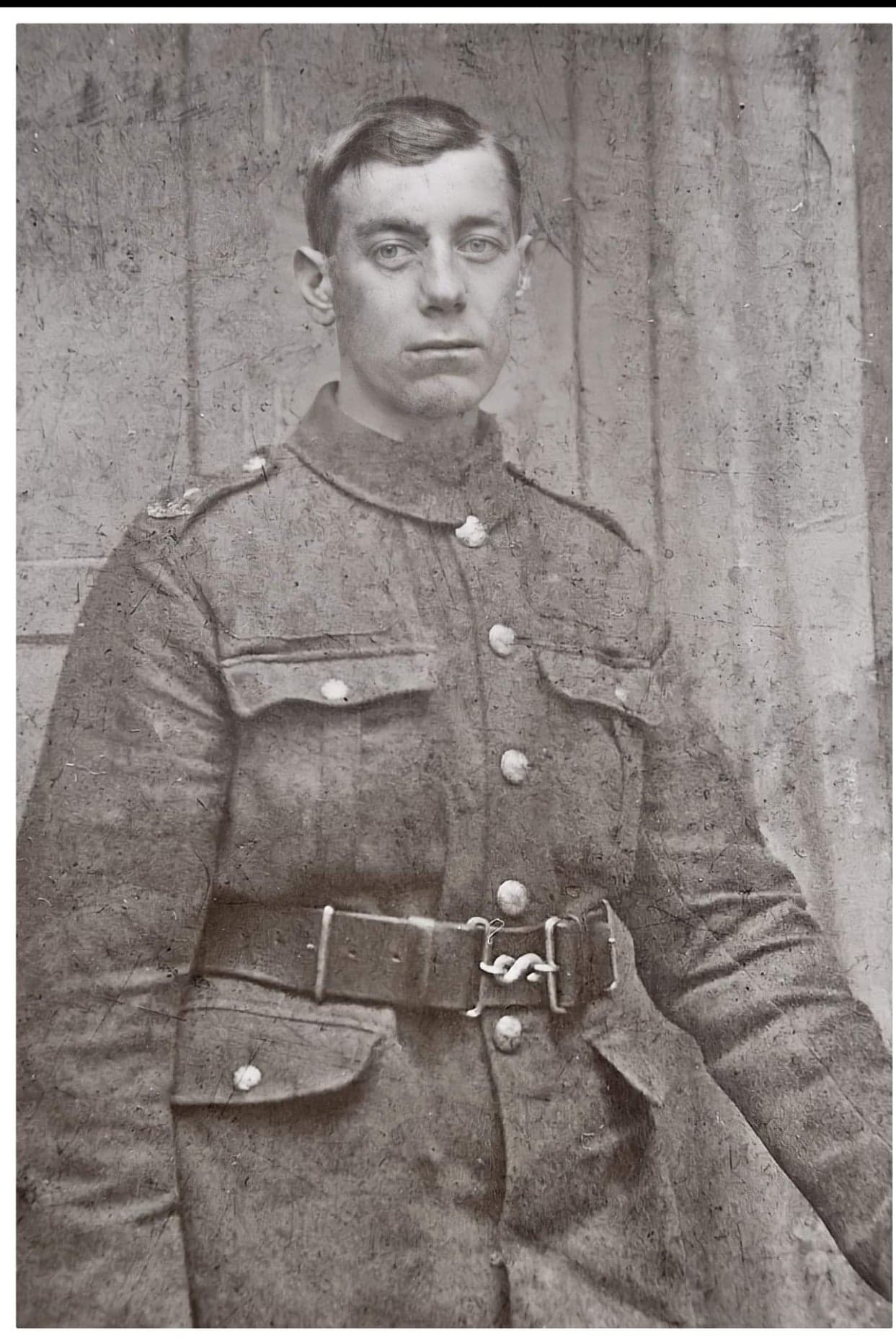Pte
William Ingram
Information about birth
|
Year of birth: 1897 |
|
Place of birth: Southampton, Hampshire, England, United Kingdom |
General information
|
Last known residence: 56 Princes Street, Southampton, Hampshire, England, United Kingdom |
|
Profession: Steward |
Army information
|
Country: England, United Kingdom |
|
Force: British Expeditionary Force |
|
Rank: Private |
|
Service number: 235130 |
|
Enlistment place: Winchester, Hampshire, England, United Kingdom |
|
Units: — Gloucestershire Regiment, 1/4th Bn. (City of Bristol) (Last known unit) |
Information about death
|
Date of death: 09/10/1917 |
|
Place of death: County Cross Roads, Poelkapelle, Belgium |
|
Cause of death: Killed in action (K.I.A.) |
|
Age: 20 |
Memorial
|
Tyne Cot Memorial Panel: 74 A |
Distinctions and medals 2
|
British War Medal Medal |
|
Victory Medal Medal |
Points of interest 4
| #1 | Place of birth | ||
| #2 | Last known residence | ||
| #3 | Enlistment place | ||
| #4 | Place of death (approximate) |
My story
William Ingram was one of the nine children of Henry Walter and Matilda Ingram. He was born around 1897 in Southampton, Hampshire, UK. By 1911, the family was living at 56 Princes Street in Southampton. William is said to have worked as a steward before the war. He decided to join the British Expeditionary Force and enlisted in Winchester. He joined the 1st/4th Battalion Gloucestershire Regiment (114th Brigade, 48th Division).
William was killed on 9 October 1917 at the Battle of Poelkapelle, part of the Battle of Passchendaele. The 1st/4th Battalion Gloucestershire Regiment attacked with the 6th Battalion Gloucestershire Regiment and the 7th Battalion Worcestershire Regiment. The 8th Battalion Worcestershire Regiment was in reserve. The start lines were about 50 and 200 yards behind County Cross Roads respectively. The aim was first to get past Berks Houses and Inch Houses and then to advance to a line at the level of Banff House and Sourd Farm. Shortly after the start of the attack, at 5.20am, the troops were already fire from machine guns and snipers. The 1st/4th Battalion was fired upon from Oxford House and Berks House, among others. Moreover, they soon lost the barrage and failed to catch up. Finally, they were held up some 150 yards east of County Cross Roads.
The failure of the attack is attributed in the war diary mainly to the ineffective barrage, which failed to take out the machine guns and snipers, but also to the exhaustion of the troops and the condition of the ground. On 9 October, the continued presence of snipers made it impossible to bury the dead and evacuate casualties. 32 men of the 1st/4th Battalion Gloucestershire Regiment went missing. Among them was the 20-year-old William Ingram. His body was never recovered or identified. Today he is commemorated on Tyne Cot Memorial (panel 74 A).
William was killed on 9 October 1917 at the Battle of Poelkapelle, part of the Battle of Passchendaele. The 1st/4th Battalion Gloucestershire Regiment attacked with the 6th Battalion Gloucestershire Regiment and the 7th Battalion Worcestershire Regiment. The 8th Battalion Worcestershire Regiment was in reserve. The start lines were about 50 and 200 yards behind County Cross Roads respectively. The aim was first to get past Berks Houses and Inch Houses and then to advance to a line at the level of Banff House and Sourd Farm. Shortly after the start of the attack, at 5.20am, the troops were already fire from machine guns and snipers. The 1st/4th Battalion was fired upon from Oxford House and Berks House, among others. Moreover, they soon lost the barrage and failed to catch up. Finally, they were held up some 150 yards east of County Cross Roads.
The failure of the attack is attributed in the war diary mainly to the ineffective barrage, which failed to take out the machine guns and snipers, but also to the exhaustion of the troops and the condition of the ground. On 9 October, the continued presence of snipers made it impossible to bury the dead and evacuate casualties. 32 men of the 1st/4th Battalion Gloucestershire Regiment went missing. Among them was the 20-year-old William Ingram. His body was never recovered or identified. Today he is commemorated on Tyne Cot Memorial (panel 74 A).
Sources 4
|
1/4 Battalion Gloucestershire Regiment (The National Archives, KEW (TNA), WO 95/2758/1). https://www.nationalarchives.gov.uk/ Sources used |
|
Census Returns of England and Wales, 1911 (The National Archives, Kew (TNA), RG14). https://www.nationalarchives.gov.uk/ Sources used |
|
McCarthy Chris, Passchendaele: The Day-By-Day Account (Londen, Arms & Armour, 2018), p124-125. Sources used |
|
Soldiers Effects Records (National Army Museum, Chelsea (NAM) 1901-60; NAM Accesion Number: 1991-02-333). https://www.nam.ac.uk/ Sources used |
More information 3
|
Commonwealth War Graves Commission Database https://www.cwgc.org/find-records/find-war-dead/casualty-details/1633004 |
|
Namenlijst (In Flanders Fields Museum) https://namenlijst.org/publicsearch/#/person/_id=91da2129-e810-4f3b-ae6d-5b05f7e27d02 |
|
Lives of the First World War (Imperial War Museum) https://livesofthefirstworldwar.iwm.org.uk/lifestory/2049053 |
